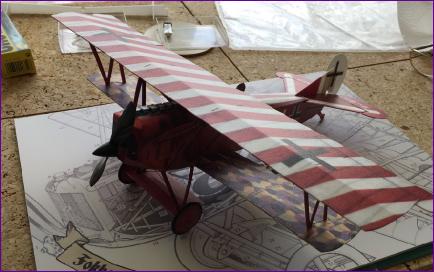|
Microaces Fokker DVII The Microaces team have come along to one or two of our indoor flying meetings to try out their creations in our rather small hall. The latest generation models are undoubtedly attractive and well thought out and just about managed to cope with the cramped environment. However, attrition rate can be a bit high at these sessions and the models seemed just a bit too nice to be subjected to such a hard life. Then, in the Summer of 2016, the models were being demonstrated at the Middle Wallop electric fly-in and were managing remarkably well in quite breezy conditions. So, when the inevitable "what can we get you for Christmas?" question arose, this time I had an answer ready! What You Get What You Don't Get Also, no electrical components are included. The argument here is that most people interested in building these models will already have the remains of a suitable donor ARTF model lying around somewhere. For me that wasn't the case but putting the word around my clubmates soon resulted in me being presented with a poly bag containing the remains of a couple of very sorry looking E-Flite Spacewalkers. Problem solved. |
||
|
|||||||||||||||||
